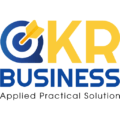Are you feeling hyper about OKRs now? Let’s find out the next 8 most valuable takeaways of implementing OKRs to your business.
9. Don’t over-appreciate the performance of each individual or team. Except for a few rare cases, sincere advice when setting should only be up to 2-3 Objectives with a maximum total of about 8 Key Results for each implementation cycle. You know, the ultimate principle that applies not only to startups but also to the size of the corporation is always “Less is more” (to focus more on success implementation).
10. Use the same negotiating method to ensure OKRs is built both from the bottom up (employees, members) and from the top down (leadership, management). Not only does it help the connection between individuals and teams, businesses with OKRs also need to ensure keeping the motivation by empowering each department and team to make multi-dimensional contributions. Help everyone understand the Objectives set out are associated with the orientation of the company and each person join hands to build those Objectives.
11. Another very important factor is that an OKR should be assigned its responsibility by a particular individual or specific team and updated regularly. And each Key Result (according to each Objective) should have a specific identified individual owner in the group because if the responsibility is unclear, it will be easy to be misunderstood that belongs solely to the responsibility of the team leader or the head of that department. In fact, the owner of the Key Result needs to periodically update what is going on, discuss with the people involved to ensure that all problems arisen are agreed to solve or adjust the solution to suit the actual situations.
12. If there are individuals or groups that are not properly assigned OKR or are overloaded, it may be a problem in the process of constructing ineffective group structures and divisions. In this case, it is advisable to first reconsider the business structure seriously and in accordance with the needs and capabilities of the business at that time. Then make sure each person and every department or group is named in the collective OKR category.
13. It should be constantly updated during the implementation process but avoid falling into meaningless meetings. If possible, try integrating meetings and discussions periodically with reviewing the OKRs process. If there is any change in resistance, people should be willing to reconsider the key result set out but no longer be as valuable as expected, even eliminated or replaced with the better one. Of course, your OKR should not directly reflect productivity or KPIs about what members are doing. But if the majority of ideas and action plans offered don’t give a positive signal that your team isn’t helping to advance OKRs successfully, you might be doing something that’s not right.
14. Like any other application method, usually each cycle applies OKR in a tight short period and brings clearer value. Always exchange, respond, stick to it and each individual requests the same from his colleagues. It is absolutely necessary to avoid constantly changing the Objective when facing just a few initial difficulties because otherwise, your whole business will lose focus and consume more resources to start over again.
15. Don’t disregard the importance of communication, feedback, and recognition (CFR) during OKRs implementation! Because this is the most important frame of the entire journey of each OKR. Because this process of exchange, feedback and recognition is seen as an effective method of reflection to learn from past successes and mistakes and timely change actions more effectively.
16. And this is the final conclusion for you. When starting, do a good job of continuing and communicate the OKR concept continuously, over and over again so that all members start memos over time. On average, for a business when it first applies OKR, depending on many different both internal and external impact factors, the results will usually start to “blooming” in about 4-6 months of application and pursuit of determination. And once the OKR culture has become a regular habit of the business, people should talk more often about the Objectives and the progress of the whole team during the recent times to help spread and light the fire of passion stronger in each contributing member.

Finally, OKR.Business wishes you great success with your OKRs in the shortest time!




